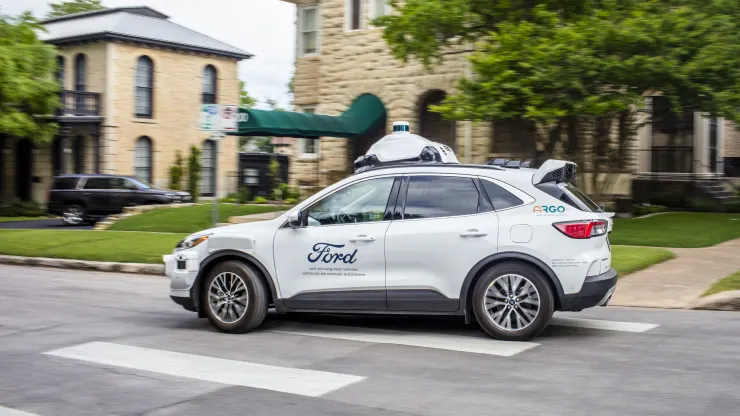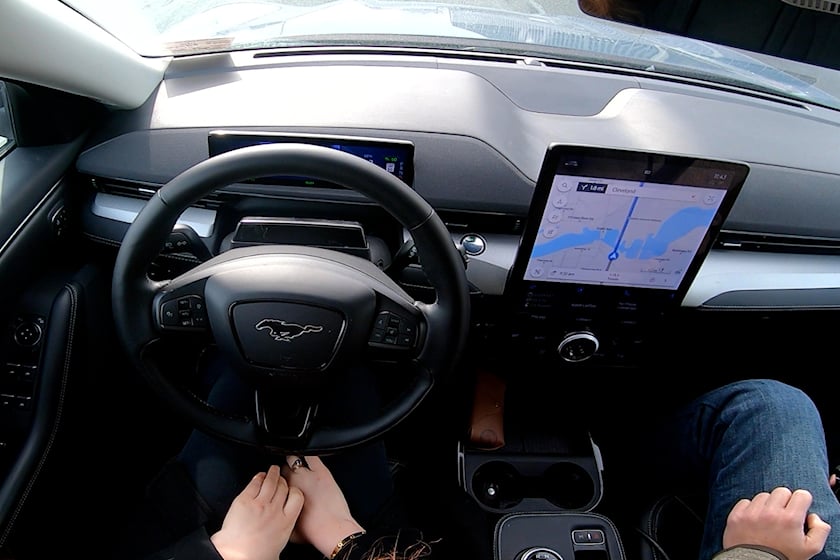After stepping away from its self-driving car joint venture with Volkswagen, Ford is back in the game with a new subsidiary, Latitude AI. The automaker is aiming to develop semi-autonomous advanced driver assistance systems that could hit the roads in the near future. Latitude AI’s focus is on taking the BlueCruise system to the next level. This hands-free technology can control a car within a highway lane, using cameras, radar, GPS, and accurate maps, as long as the driver is watching the road and ready to take control in case of an emergency. With Latitude AI, Ford wants to take things even further, allowing drivers to not just take their eyes off the road but even catch up on some much-needed sleep at times.
According to Farley, Latitude AI’s technology is the perfect solution to offer customers the autonomy they desire without having to wait for fully self-driving cars, which could take years to become a reality. He emphasized that Ford’s ultimate goal is to make the driving experience safer, more enjoyable, and more efficient.
“We want to make sure that our customers have access to the latest technology and that they’re going to be able to enjoy it in their vehicles today,” Farley said
“We want to make sure that our customers have access to the latest technology and that they’re going to be able to enjoy it in their vehicles today,” Farley said. “We don’t want to wait for that perfect autonomous vehicle world, where we can’t deliver that value to customers today.”

The automaker plans to roll out its BlueCruise system, which is available on its 2021 F-150 pickup trucks and the new Mustang Mach-E electric SUV, to 100,000 vehicles by the end of the year. The hands-free system is already available on certain highways in the United States and Canada.
While fully autonomous vehicles may still be years away, Latitude AI’s technology is a step towards giving customers the autonomy they want, making their daily commutes more productive and efficient, and ultimately revolutionizing the way we think about transportation.
Continuing on the topic of Ford’s new subsidiary, Latitude AI, CEO Jim Farley expressed his excitement for the potential of the next generation of hands-free driving technology. With BlueCruise already offering over 50 million miles of safe, hands-free driving, Farley believes that customers are ready for even more advanced features that will allow them to relax and enjoy the ride.
“We just got more excited about that than a fully autonomous fleet of vehicles someday in the future,” he said.
While fully autonomous vehicles may not be a reality anytime soon, the demand for semi-autonomous features is higher than ever, according to Farley. “We just got more excited about that than a fully autonomous fleet of vehicles someday in the future,” he said.

Although there’s no word yet on when Latitude AI’s advanced driver assistance systems will be available to the public, the team is comprised of hundreds of experienced former Argo AI employees who are working tirelessly to bring the technology to fruition. As the project develops, Ford aims to continue pushing the limits of what’s possible in the world of hands-free driving.
Ford CEO Jim Farley is optimistic about the future of automated driving technology, and is confident that the new capabilities being developed by Latitude AI will revolutionize the way we think about commuting. With hands-free driving already available through BlueCruise, the goal now is to take it a step further, allowing drivers to completely disengage and even catch some shuteye during their daily commute. While the technology is still in its early stages, Farley and his team are working hard to make it a reality, and believe that lidar will play a crucial role in ensuring the system’s safety. With hundreds of former Argo AI employees on board, the future looks bright for Ford’s foray into autonomy.



